Bathrooms in kindergarten - requirements, design, equipment
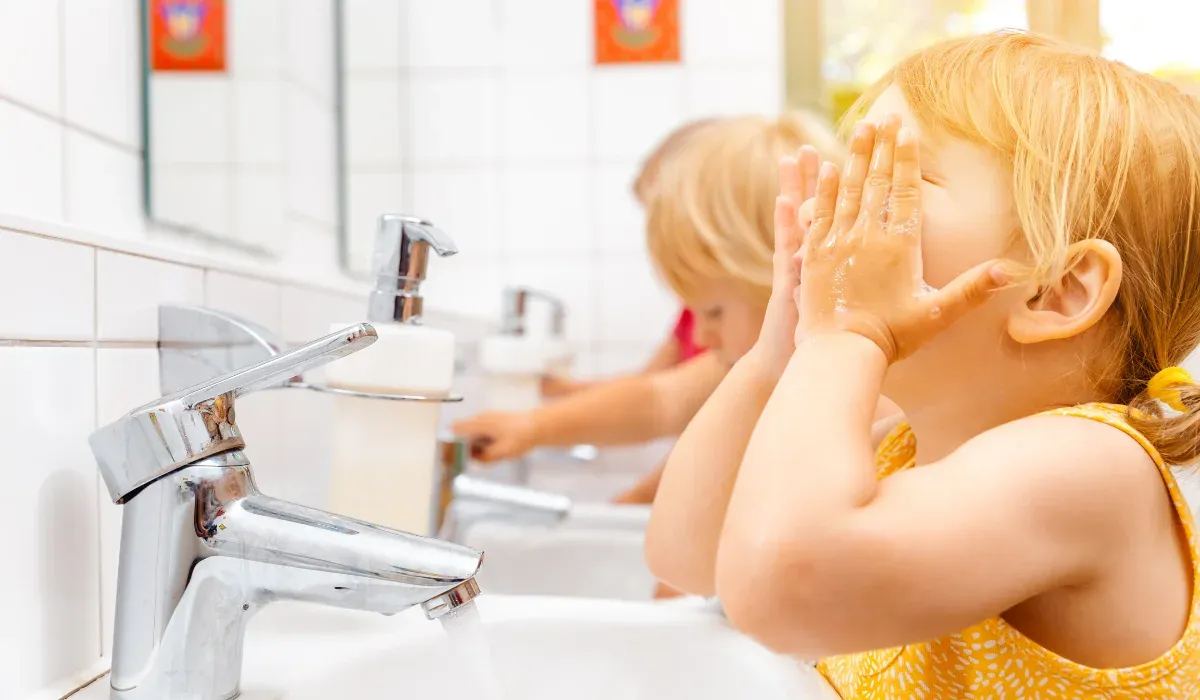
A kindergarten bathroom is a space that should be designed with particular care. It’s important to consider not only the regulations outlined in various decrees but also the needs of young children who are just learning to use the toilet independently.
Therefore, it is crucial for the bathroom to not only be safe and allow for good hygiene practices, but also to be a welcoming space that encourages children to use it and interact with its fixtures. Like school bathrooms, the equipment installed in kindergarten bathrooms must meet specific parameters. Most importantly, the equipment should be made from certified materials that are safe for health and resistant to damage. What else should be taken into account when designing a kindergarten bathroom?
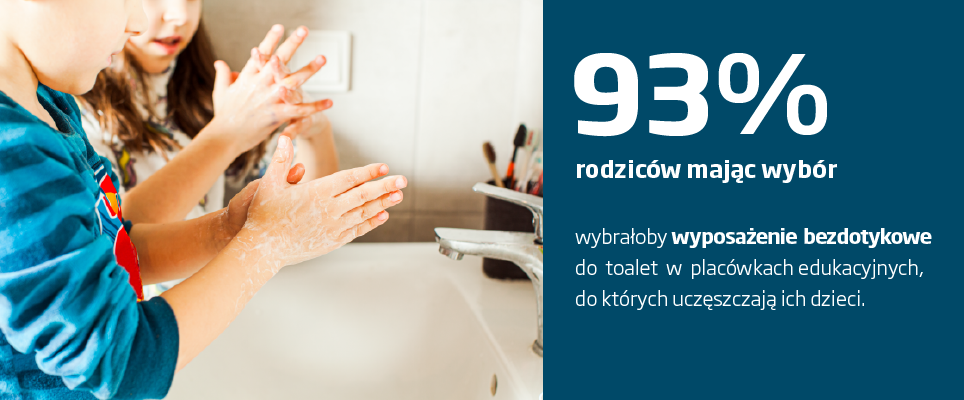
Kindergarten bathrooms
For young children, being in kindergarten can be a challenging experience. This is why it’s especially important for every room in the facility to be inviting, building a sense of security and a desire to play. This also applies to kindergarten bathrooms.
These spaces play a vital role in teaching children proper hygiene habits. A neglected or poorly designed bathroom can discourage children from using it, which could pose serious health and safety risks. Therefore, selecting all bathroom equipment should be done with great care. All equipment in a kindergarten bathroom must be easy to use and tailored to the needs of young children, ensuring complete comfort.
Kindergarten toilet regulations for 2021
The requirements for bathrooms and other hygiene and sanitation areas in kindergartens are precisely outlined in regulations on safety and hygiene in schools, kindergartens, and other educational institutions. These regulations cover aspects that must be strictly followed when designing kindergarten bathrooms. The regulations specify, among other things:
- The number of sinks, urinals, and toilets,
- The need to provide children with constant access to running water (both hot and cold),
- The requirement to provide soap, hand disinfectants, and towels,
- The dimensions of equipment suited to children’s needs,
- The activities required to maintain maximum cleanliness in kindergarten bathrooms.
Sanitary regulations for kindergartens
Sanitary requirements for kindergartens are regulated by the Ministry of Education. These regulations define the number of sinks and toilets needed, as well as cleanliness standards.
To some extent, these regulations also address ergonomics and safety, which are crucial in children's bathrooms.
There are no strict guidelines specifying the installation height of bathroom fixtures. However, it is specified that the institution must provide sinks and toilets installed at an appropriate height for children or equip bathrooms with non-slip platforms.
According to sanitary regulations, kindergartens are required to maintain cleanliness in bathrooms. To achieve this, washable materials resistant to wear and moisture should be used on the walls up to a height of at least two meters. In recent years, regulations also introduced the requirement to provide hygiene products such as soap, toilet paper, and paper towels or hand dryers.
How many toilets per child in kindergarten?
According to the regulation from the Ministry of Education on safety and hygiene in public and non-public schools and educational institutions, the number of toilets in a kindergarten must not be fewer than one for every 15 children. Additionally, there must be a shower or other sanitary facility available for washing a child.
The number of toilets in a kindergarten does not depend on the children's gender, as bathrooms at this stage are not yet separated by gender.
Toilet height in kindergarten
The height of toilets in kindergarten should be adjusted to the age of the children. It is generally accepted that the height of a toilet seat for a three-year-old should be around 50 cm. For children between the ages of three and six, the appropriate height is between 55 and 65 cm.
When choosing toilets for preschool-aged children, the length of the toilet bowl is also important. It should allow the child to sit comfortably. The optimal dimensions are:
- 37.5 cm for children up to 3 years old,
- 43 cm for children aged 3-6,
- 50 cm for children over six years old.
If the toilet bowls are too wide, special seat adapters can be a good solution. These are particularly useful in bathrooms used by children from different age groups, allowing for easy adjustment of the width and length of the toilet bowl.
WC cubicle dimensions in kindergarten
The spaces in kindergarten bathrooms are smaller than those required for school students or adults. A WC cubicle in a kindergarten should be no less than 80 cm wide and 120 cm deep.
Additionally, the walls and front of the cubicle should be at least 150 cm high, which is also lower than in school bathrooms. The maximum height is determined by each facility individually. Regulations also state that there must be a gap of at least 15 cm between the floor and the bottom of the cubicle door.
Sink height for children
As mentioned earlier, regulations do not specify an exact sink height for children in kindergarten. However, some general guidelines based on the child's age and height are followed. The recommended sink installation height is:
- 50 cm for children under the age of 3,
- 55-65 cm for children aged 3-6.
As you can see, the sink height can easily be determined by assuming that a sink for a three-year-old should be installed at 50 cm, and then adding 5 cm for each additional year of age.
Bathroom Design for Children
Designing a kindergarten bathroom is a challenging task. Various factors must be considered, such as the ergonomics of the space and the safety of the children using it. It is also crucial that the surfaces and equipment in the bathroom are easy to keep clean.
A Safe Bathroom for Children
Regulations do not cover all the important aspects that need to be considered when designing a bathroom for young children. It is advisable to opt for proven and safe solutions available on the market.
An essential element is the inclusion of a non-slip floor in the design. This is especially important in areas where water may be present, such as in the toilet stalls and near the sinks.
The stalls themselves should be lockable to ensure the necessary privacy for the child. However, the locks used should be easy to open from the outside if needed. Lock handles are ideal for this purpose. They allow children to open the door without using force, while also allowing caregivers to easily access the stall if necessary.
When designing a safe bathroom, it’s also important to consider items such as soap dispensers, hand dryers, and towel dispensers. These should have rounded edges to reduce the risk of injury if a child slips or is pushed and hits one of these elements.
Using durable, reliable products and technologies is key to safety. This ensures that all bathroom fixtures will serve their purpose for many years.
A Bathroom That Is Easy to Keep Clean
In kindergartens and other educational facilities, bathrooms that are easy to maintain are extremely important. This can be achieved by following a few simple guidelines.
First, the bathroom walls should be smooth, washable surfaces resistant to dirt and wear, up to a height of about 2 meters. Bathroom tiles are commonly used for this purpose.
Toilet stalls must also be made from materials that can be easily cleaned, meaning they must be resistant to water or cleaning agents. For partition walls made from chipboard or drywall, additional layers of tiles are often applied. Laminated coatings on chipboard or HPL (High-Pressure Laminate) panels are also popular. The latter is an excellent choice for bathrooms, as it is primarily made of synthetic resins, making it fully resistant to moisture and water. Additionally, it has smooth surfaces, which make cleaning easier. Furthermore, these panels retain their gloss and maintain an excellent appearance for many years.
Durable Sanitary Fixtures
All equipment in a kindergarten bathroom should be made from materials that ensure long-lasting durability and resistance to damage. This applies to fixtures such as faucets, sinks, and toilet bowls, as well as the walls of the stalls. The HPL panels mentioned earlier and high-quality stainless steel sanitary ware are particularly durable options.
For devices like flush mechanisms and other plumbing elements, only products from reputable manufacturers with long warranties should be used. This significantly reduces the risk of damage and the cost of repairs or replacements.
Kindergarten Equipment - Bathrooms
The equipment in a kindergarten bathroom should be both functional and aesthetically pleasing. It’s worth ensuring that the space includes colorful walls, doors, and interestingly designed accessories. The purpose of sanitary facilities in a kindergarten goes beyond hygiene – it’s also a place where children learn these habits. Therefore, the bathroom should be a welcoming space where children are happy to spend time and follow the hygiene rules taught to them.
Kindergarten WC
The toilet in a kindergarten must not only be installed at the correct height, but the shape of the toilet seat is also crucial. Toilets for children are places where young kids learn to use public bathrooms. With the right equipment, this process can be made much easier.
In cases where several groups of children of different ages use the same bathroom, it’s worth considering toilet seat adapters. These allow each child to use the most comfortable option for them.
Kindergarten toilets should also offer other conveniences. Even young children differ in height, so it’s possible that some preschoolers may be too short to comfortably sit on a toilet meant for their group. Special toilets for children with "steps" on the sides were designed with this in mind. Children can rest their feet on these, using them as a comfortable platform. Their arrangement also encourages a squatting position, which is the healthiest and most natural way to relieve oneself.
Children's Sinks - Kindergarten
Proper handwashing is fundamental to hygiene. However, children have not yet developed the necessary habits in this area. To encourage them to learn and reinforce these skills, the bathroom in a kindergarten should be equipped with elements specifically tailored to their needs.
Sinks for children should be designed in such a way that even the youngest preschoolers can use them easily and effortlessly. It’s essential to emphasize how important it is to install them at the correct height. This eliminates the need for special platforms, allowing the child to focus more on washing their hands rather than maintaining balance. This significantly reduces the risk of falls, which could discourage young children from this activity.
While classic single-basin sinks work well in elementary schools, for preschoolers, double or triple-basin models are a better option. These save space and allow an entire group to wash their hands quickly. They help shorten the queue at the sink, which is especially important before meals or after sports activities. Of course, installing such equipment may not always be possible in every room, but where conditions allow, ergonomic multi-basin sinks are highly recommended.
Bathroom Fixtures for Children
An essential part of maintaining hygiene, and consequently the health of children, is choosing the right bathroom fixtures. In kindergartens, electronic – touchless – models are particularly effective. These allow for easy handwashing without physical contact. This greatly reduces the risk of germs being spread by touching the faucet or handles. This concern has been highlighted during the coronavirus pandemic but is also significant in preventing common illnesses like colds.
Touchless bathroom fixtures are not only convenient and hygienic but also eco-friendly. Thanks to motion sensors, water flows only when necessary. This saves water, which benefits the environment and helps reduce utility costs, while ensuring comfort and safety for users.
Soap Dispensers for Children
Soap dispensers used in kindergartens should first and foremost be easy to use. It is also advisable to opt for touchless solutions, which prevent the spread of bacteria and viruses.
Motion-sensor dispensers help reduce soap consumption by dispensing just the right amount needed for hygienic handwashing each time. This, in turn, leads to real savings.
Of course, a soap dispenser for a kindergarten should not only be functional. Considering that children use it, it also needs to be visually appealing. A colorful, well-designed device that dispenses soap when a hand is placed underneath turns handwashing into a fun activity, making it easier to instill the necessary hygiene habits.
Bathroom Accessories for Children
The basic equipment of any kindergarten bathroom includes toilets, sinks, and appropriate fixtures. It is also necessary to equip the bathroom with accessories that are adapted to children's needs. These include:
- Bathroom hooks,
- Waste bins,
- Toilet brushes,
- Convenient toilet paper holders,
- Towel dispensers,
- Optionally: hand sanitizer dispensers and hand dryers (one for every two sinks).
A bathroom is a space that requires special attention during the design process, especially in kindergartens and other educational institutions. Proper equipment plays a key role in helping children follow basic hygiene rules, which directly impacts their health and reduces the occurrence of various illnesses. A well-designed kindergarten bathroom not only meets all the requirements set by the Ministry of Education and the sanitary inspectorate but also takes into account the children's ergonomic needs. The psychological factor is also important – children are much more likely to use a colorful, well-equipped bathroom that appeals to them visually than one that does not. This is why choosing the right equipment and accessories during the bathroom design phase is so crucial.
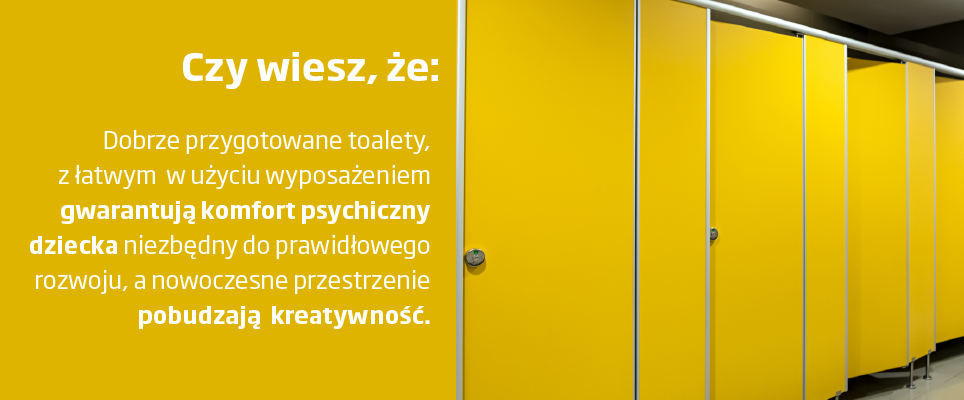
Czytaj także:
Łazienki szkolne - wymagania, projekt, wyposażenie
Wyposażenie sanitarne - zaopatrzenie architektów i projektantów
Wyposażenie toalet dla firm budowlanych i deweloperów
Łazienki dla HoReCa
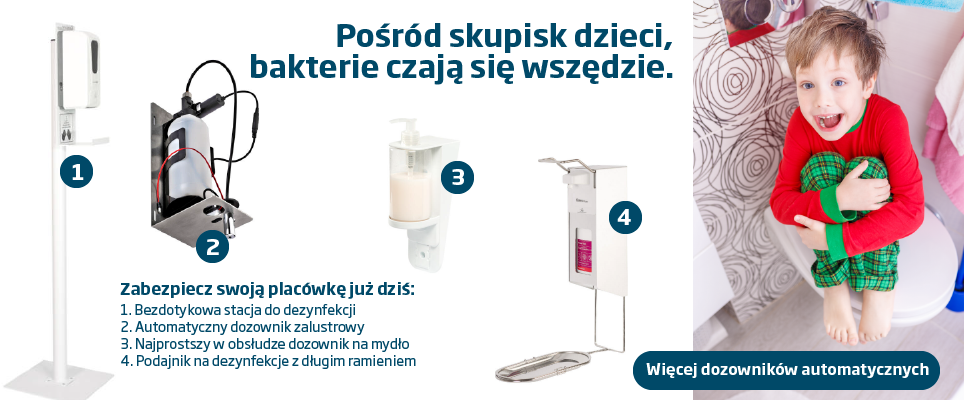

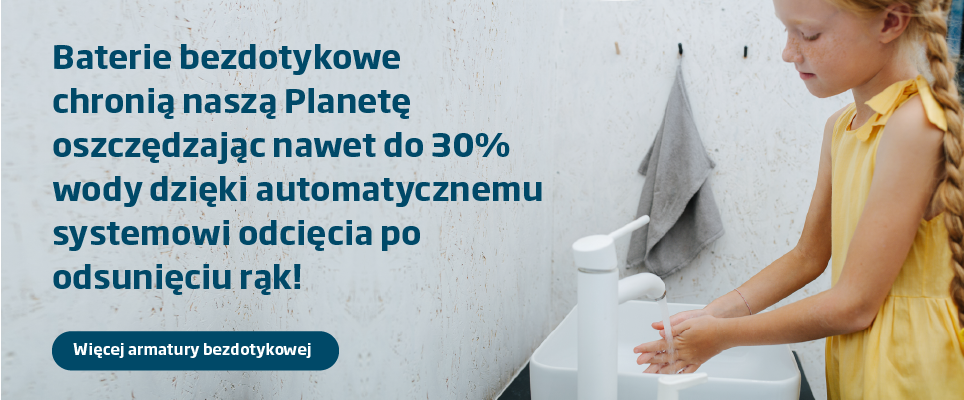
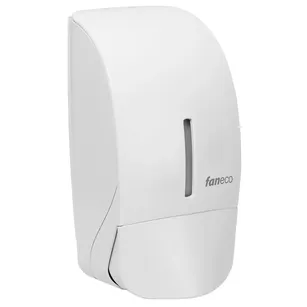
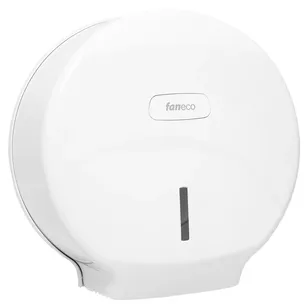
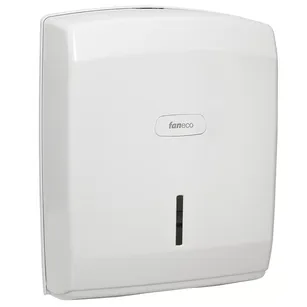
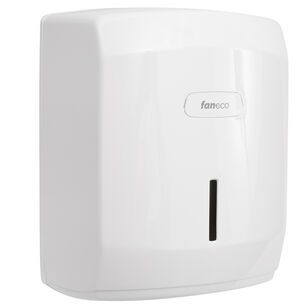
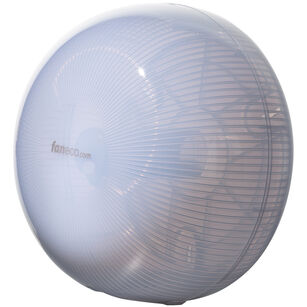
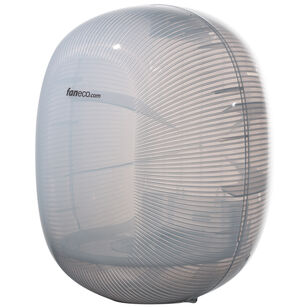
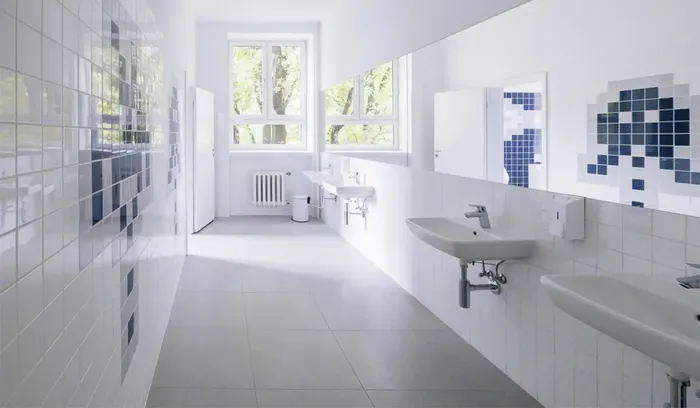
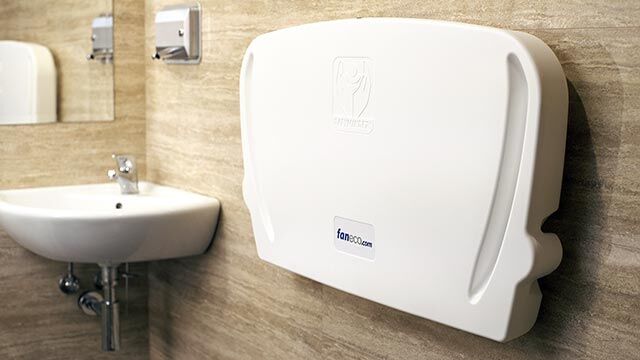
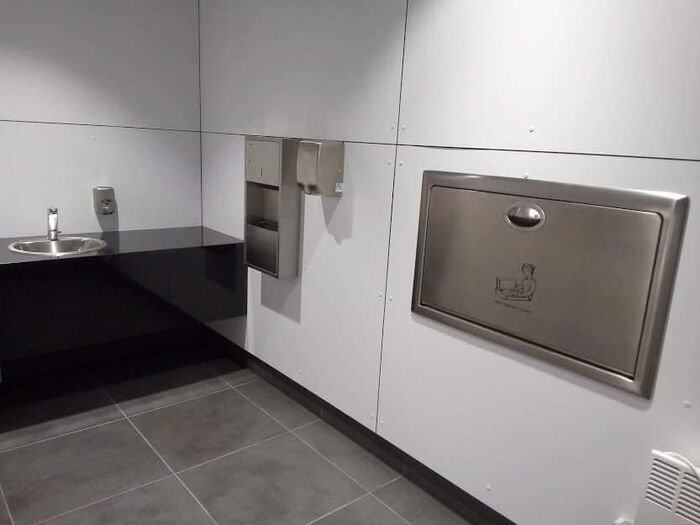
 Polski
Polski
 Český
Český
 Deutsch
Deutsch
 Spanish
Spanish
 French
French
 Italian
Italian